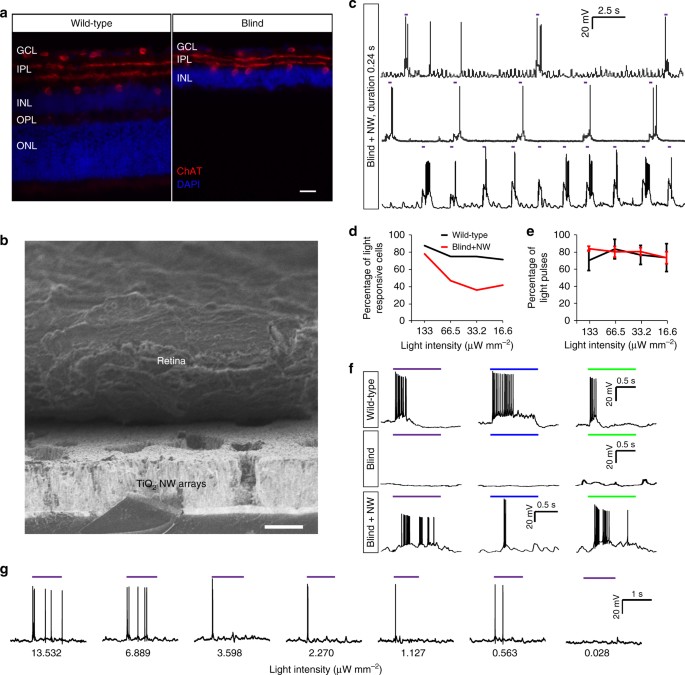Nanowire Arrays Restore Vision in Blind Mice

Retina is an important light-sensitive tissue that transduces light information into neural activities through multi-layers of neuronal cells. Light entering an eye passes through the transparent retina and is mostly captured by the visual pigment-containing photoreceptors. Retinal degenerative diseases such as retinitis pigmentosa and macular degeneration lead to irreversible damage or even loss of photoreceptors, which can result in serious impairment of vision and eventually blindness.
The state-of-art retinal prosthesis devices require the use of a subretinally placed photodiode array detecting near-infrared signals from a video capturing camera. Recently, developing light-responsive materials as artificial photoreceptors for interfacing with blind retinas has emerged as a promising alternative for retinal prosthesis, with several exciting preliminary demonstrations using metal electrode arrays, cadmium sulfide-carbon nanotubes15, semiconductor silicon photodiodes or conducting polymers.
Source: nature.com